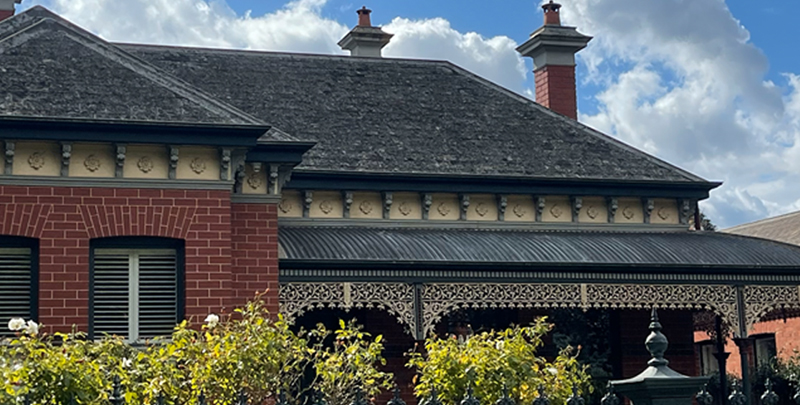With property affordability dominating headlines and the federal election fast approaching, Melbourne’s property market dynamics are shifting.
In the past fortnight alone, we’ve seen major policy announcements, a dramatic shift in interest rate expectations, and a palpable change in buyer behaviour on the ground.
Let’s explore what’s really happening, and what it means for Melbourne property investors.
Election promises: Familiar solutions with unintended consequences
The major parties are rolling out ambitious plans to help first home buyers, but the details – and the likely impacts – deserve a closer look.
Labor’s proposal
Labor is proposing to expand its First Home Buyers Guarantee. This would remove means testing, lift the Melbourne price cap from $800,000 to $950,000, and scrap the cap on the number of places available.
In practical terms, more buyers could purchase with just a 5% deposit, with the government as guarantor – eliminating the need for lenders mortgage insurance. These changes are set to begin in January 2026.
Labor’s second promise is a $10 billion spend to build 100,000 new homes, exclusively for first home buyers. Realistically, these homes won’t be available until at best mid-2026, assuming construction goes smoothly.
The Coalition’s proposal
The Coalition’s alternative is a mortgage deduction scheme for new builds. First home buyers could deduct a portion of their mortgage interest from income tax for the first five years, up to $650,000 of the loan.
This will be means tested – $175,000 for singles, $250,000 for couples – with plans to be legislated within 100 days if they win government.
How will this impact the property market in real terms
On the surface, these policies are well-intentioned. But unfortunately in the past, these types of approaches have often produced unintended consequences that can prove to be counter productive.
Every time a scheme is introduced to help buyers, demand increases. And when demand rises faster than supply, prices follow suit.
The result? More people get into the market, but often at higher price points and with bigger mortgages.
The construction of 100,000 new homes will help, but those benefits are years away.
In the meantime, affordability pressures may only intensify.
Interest rates: From cautious optimism to anticipation
Interest rates are suddenly front and centre. Thanks to global uncertainty and shifting economic signals following the US election, the Reserve Bank’s tone has changed dramatically.
Consumer confidence has slumped, with the ANZ Roy Morgan index dropping to 84.2 – well below the long-term average of 109.7.
Where we once expected perhaps one or two cuts this year, there’s now talk of up to five by Christmas.
Money markets are fully pricing in a 25-basis-point cut at the next RBA meeting in May, and there’s even a one-in-three chance of a 50-point move.
In fact, markets are now pricing in a total of five 25-basis-point cuts by year’s end, which would see the cash rate fall below 3% – a significant shift from where we started the year.
If we look back throughout the decades we can see that one-off cuts rarely move the needle. But when rates fall consistently over a short period, buyer sentiment and prices can turn sharply upwards.
On ground case studies: Competition and confidence are building
Since the start of 2025, the mood at Melbourne auctions has shifted. Clearance rates, which languished around 60% late last year, have rebounded to nearly 70%.
Properties that previously attracted just one or two bidders are now seeing three or four, and this trend isn’t limited to a single property type. Whether it’s a high-quality one-bedroom apartment or a modest house on good land, the common denominator is quality.
Take, for example, a recent auction I attended in Melbourne’s inner east. A one-bedroom apartment, initially quoted in the high $400,000s to low $500,000s, ended up with five bidders and sold for $670,000. The crowd was mostly first home buyers, some with parental support. The result? Well above the initial price guide, and a clear sign that buyers are willing to stretch for the right asset.
Another auction, this time for a modest house on a good street, saw a similar story. Less than a month earlier, a near-identical property on the same street sold for $1.67 million after passing in with limited interest. Fast forward a few weeks, and the next auction drew a crowd of over 50, with five active bidders pushing the price nearly $200,000 higher. This wasn’t a case of runaway prices, but rather a sign that momentum – and confidence – are returning.
What’s particularly telling is the ‘flow-on effect’. As competition intensifies for premium properties, buyers who miss out start to compromise – on location, style, or improvements – and bring their budgets down to the next tier.
This creates more competition across the board. While prices haven’t surged yet, the groundwork is being laid for more consistent growth if rate cuts materialise.
Is Melbourne still undervalued?
I said before Spring last year that Melbourne felt undervalued, with some excellent opportunities for buyers. That still holds true.
While I expected the market to remain subdued throughout 2025, the pace of change – especially if interest rates fall further – could see momentum build sooner than I first thought. It’s not an immediate turnaround, but the signs are there for those paying close attention.
Take home message
Melbourne’s property market is entering a new phase, shaped by policy, rates, and shifting sentiment. While political promises and economic uncertainty dominate the headlines, the real story is unfolding at street level – where competition is rising, and buyers are recalibrating.
For those prepared to act decisively and keep a close eye on the market, the coming months could present rare opportunities. As always, informed decisions today will set you up for rewarding outcomes tomorrow.
Listen to Jarrod’s podcast:

